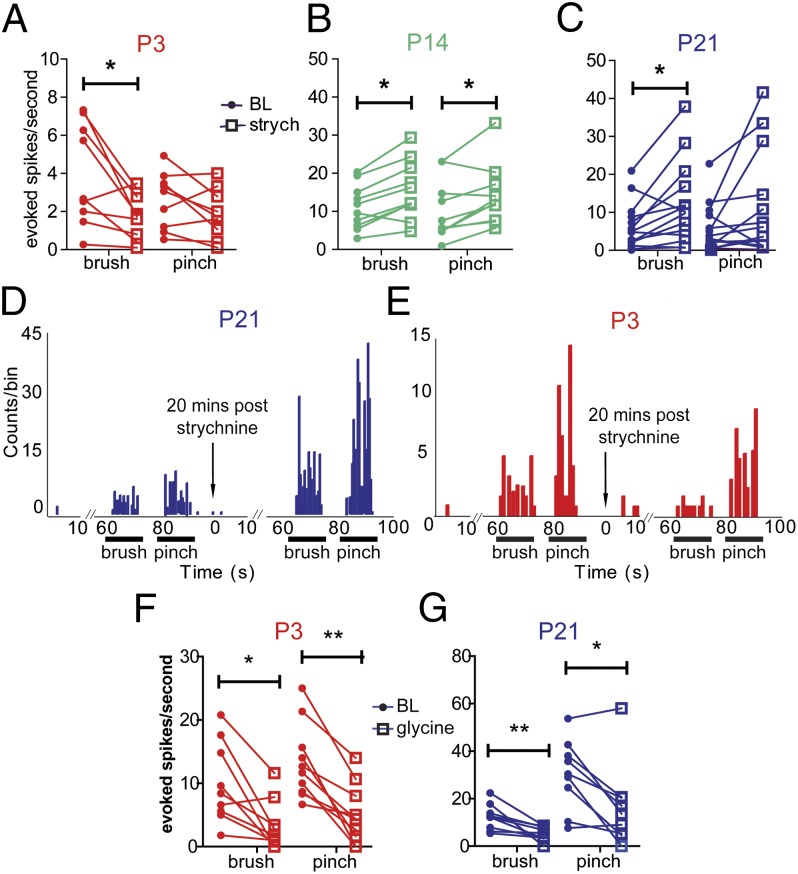Fig. 3.
Strychnine reveals a glycinergic facilitation of brush-evoked activity at P3, which becomes inhibitory by P14. (A, B, and C) Brush-evoked and pinch-evoked action potential firing in response to strychnine application to the spinal cord of (A) P3 (n = 9), (B) P14 (n = 10), and (C) P21 neurons (n = 14). (D and E) Poststimulus time histograms of representative WDR neurons at (D) P21, and (E) P3 at baseline, and 20 min poststrychnine. Note that within the same cell at P3, strychnine selectively inhibits brush responses, although not affecting those to pinch. (F and G) Brush- and pinch-evoked firing of (F) P3 (n = 9) and (G) P21 neurons (n = 9) in response to glycine administration to the cord. *P < 0.05, **P < 0.01.

